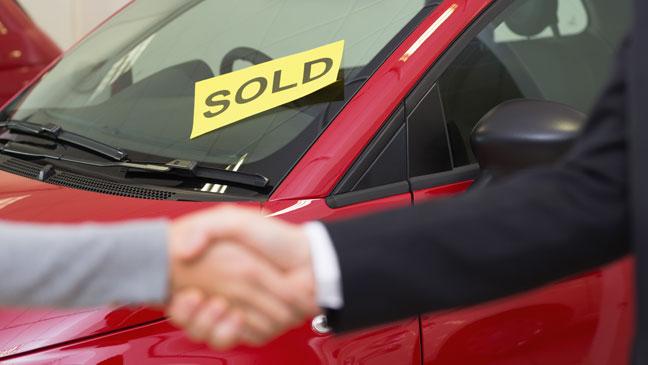
Buying a car is one of the most important decisions of your life, no matter if it is a semi-new car, it will always be an investment that will require years of personal savings. So deciding on one will take time and research.
Since it will require attention to detail, since buying a used car has its benefits such as saving a lot of money, but in contrast one of the disadvantages is that you will not be able to know exactly the mechanical failures that it has had over time or by how many owners has passed.
To make the best purchase, it is recommended that you take into account expert advice such as the following:
Prioritize Your Needs
The first thing you should take into account is to consider what you need the car for, that is, what use will you give it, whether it will be for private use, transfer of merchandise, or for personal transport. This way you can narrow your search to a type of car, be it a compact car, utility vehicle, or truck, and you can focus on the makes and models.
Compare Prices And Guarantees
Once you have decided on the type of car, model, and car brand, it is recommended that you compare the costs in different places, it is not the same to buy from an agency or an individual. For example, the amounts in the workshops or distribution networks of the brands may be higher, however, they always offer greater guarantees in case of hidden mechanical defects. In contrast, buying from an individual may be cheaper, but even if there is a contract involved, claiming is more difficult, expensive, and complicated.
Avoid Buying In Large Batches
Prices in these places may be cheaper, but you run the risk of running into the famous “coyotes” who are people who offer you cars regardless of the state in which they are. They will hardly be honest with you and will hide vehicle damage. Identifying these people is very simple, when you arrive at the car market they immediately approach you asking if you sell or buy, they also offer you a large number of cars.
Manage Your Budget
Many times the desire to find the ideal used car, such as the sportiest car or the one with the greatest power, can lead you to spend all the money you allocated for the purchase, however, it is recommended that you leave a little mattress in case need to repair an automotive breakdown in a short term. You should also take into account that if you need to change a piece, sometimes its costs can be high.
Inspect The Car Body
Check that the pieces such as the doors, you should observe for example that they have a correct alignment, if they are not straight it is likely that they have suffered a blow.
From the front, do a headlight check. If one looks newer, it may have been replaced as a result of a crash. Also check the joint between the windshield and the roof, to make sure it is completely straight and there are no ripples.
On the sides, in addition to inspecting the alignment of the doors, make sure that they close perfectly and that the hinges do not have recent welds or change in tone in the paint, because this may mean that they have suffered an accident. On the other hand, if they look worn, they may have spent a long time in the open.
From the rear, pay attention to any strange welds on the spare tire. Also be careful with the trunk is an area that is not in sight and if there are failures in it it is very likely that the repairs will be expensive. You must lift the carpet and tires to see if the car has been repainted.
Look At The Mileage
Knowing how many kilometers a car has traveled in its useful life is very important because this will give you an idea of the wear and tear that its engine, its internal parts, and other components could have.
At this point you must be very careful since many times people sell second-hand cars with altered mileage, passing them off as relatively new cars. The way you can avoid being cheated is by observing the odometer (it is the mechanism that measures the distance traveled by a car). This is located on the front dash near the steering wheel, if it has torn at the edges it has probably been removed.
Also if it is an analog odometer, focus your attention on the alignment of the numbers, on the digit on the left. If these present a slight unevenness that can be a clear sign that it has been modified.
When the odometer is digital it becomes more difficult to know the truth, in most cases, you will have to rely on an expert. In some models, the distance traveled is stored in a system called the vehicle’s ECU, it is enough for the mechanic to pass a scanner to know if what the device marks are real.
Another tip in terms of mileage is that you start to take accounts, car dealers consider that in normal use a car travels an average of 10 to 20 thousand kilometers in a year.
So if they sell you a 10-year-old vehicle and they tell you that it has traveled 40 thousand km, and it is supposed to travel approximately 15 thousand kilometers per year, be careful! they are probably teasing you.
Contrast what they tell you by looking at the year of the car, which appears on the circulation card and on the invoice. You must also verify that the invoice is original from the agency and not from an insurance company.
It should be noted that car agencies are more reliable in terms of mileage, they usually sell almost new cars.
Finally, to have this aspect completely under control, it is pertinent to know that it is recommended that your used vehicle has a route between 60 thousand and 90 thousand kilometers.
Evaluate The Mechanical Performance Of The Car
To check the automotive mechanisms of a car you must try it, it is recommended that you turn it on and look first at:
- Dashboard of functions: with this, you will see the indicators that give information about the status of mileage, gasoline, oil, temperature, and battery. What you should pay attention to on the board is that no warning sign is lit.
- Electrical functions: with the vehicle on, make sure that the headlights, turn signals, turn signals and interior lights turn on correctly. He also turns on the air conditioning and tests all its functions. Activate the cleaners and functions behind the wheel. In general, inspect all electrical items such as the radio, charger connectors, USB, and if you have cigarette lighters.
- Check the engine: visually you can tell the state of an engine. The engine must be free of particles, rust and sludge. If you notice a yellowish coloration, it is likely that it has been faded or has had an excessive heating. Also note that the engine hoses are tight, if they are soft it is because they are worn. Regarding the engine, you must observe other additional aspects such as, for example, that the radiator is not sulfated, because that indicates that it is damaged; check the antifreeze liquid compartment for leaks; that the battery is not with liquids or strange colorations (it is important that you ask when was the last time it was changed). Also, check the spark plugs and verify their heating. Also, make sure there are no bare wires or wires covered with electrical tape.
- Braking system: in addition to starting the car, drive it to test that the shock absorbers respond correctly. Check that there are no vibrations and that the brake discs and pads are not thinned.
- Check the tires: test the balance of the tires, rotate them, and make sure that they respond well to braking and that they are not flat.
If you notice any of these flaws, you can probably negotiate the price.
Verify That The Car Does Not Present Legal Problems
To avoid future problems or being the victim of a scam, it is extremely important that you obtain the vehicle papers such as the original car invoice and the original car policy. You must make sure that the engine number corresponds to the number that appears in the documents. Also ask that they provide you with proof of the last tuning, the last four verifications, and the status of the tenure payment.
Also, find out if the vehicle has a history of fines, if it is repossessed, is in any legal process, or has a theft report. This can be consulted on the Internet portal of the Public Vehicle Registry of the federal government (REPUVE). It is very important that you take your time to make your purchase and do not rush because they can show you a document without a theft report, however, these reports are updated 24 hours after a complaint.
The above tips will lead you to realize if the car you want to buy is the right one. The more information you have about it and the more time you invest in researching, the greater your chances of making a successful purchase.







